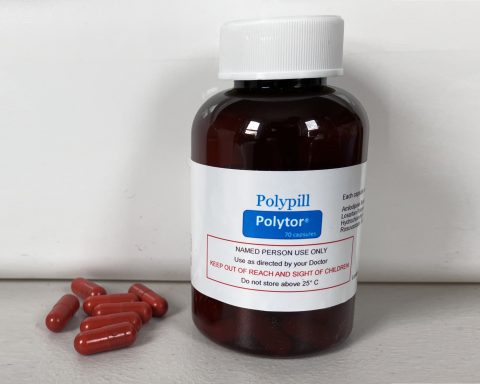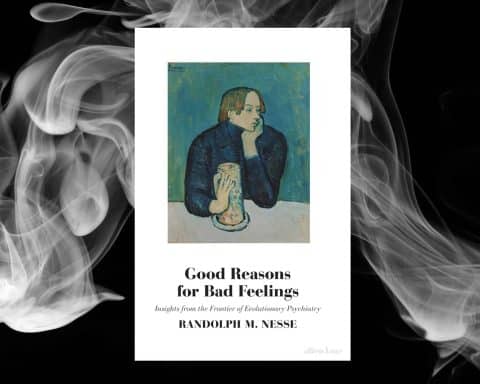
Carwyn Hooper is a Reader in Global Health Ethics and Law, St George’s University of London. He is on Twitter: @hoopercarwyn
John Spicer is a GP and teacher in Croydon, South London. He is on Twitter: @johnspicer3
Ask yourself ‘Do I feel lucky?’ This often-misquoted line from Dirty Harry, said by Clint Eastwood in role, serves to introduce the notion of moral luck. Gratifyingly, we do not often find ourselves staring down the barrel of a violent cop wielding a gun in the course of our clinical duties. But we do need to consider how luck fits into our professional lives, and the lives of our patients. And we need to reflect on the normative aspect of luck, so called moral luck, even if the term can at first appear oxymoronic.
Think of it this way: we can only be morally responsible for that which we have at least partial control over — that could mean our actions, thoughts, and even the outcomes our patients endure. Yet in the messy, complex world of primary care this degree of control might be elusive, making the interaction between our moral responsibility and luck important to think about.
“… we can only be morally responsible for that which we have at least partial control over … “
For example, to escalate concerns about a poorly performing, or alcohol overusing, colleague is a matter of courage, among other things, and an example of virtuous behaviour. Many of us have had to raise a concern in the course of our careers, and it hardly needs describing as a stressful and courageous act when done. Some of us would have never had to do such a thing and, as a matter of luck, would have never encountered a situation where that degree of courage — or judgement — was called for.
It is a matter of luck regarding circumstances we’ve found ourselves in. Additionally, when we’ve brought a justified concern forward when it was necessary, the full spectre of the consequences was not in our control. Whether our action results in overall good circumstances — perhaps with the colleague getting appropriate assistance, and minimal strain to professional and team relations — is a matter of luck regarding the outcome of our action.
Similarly, when we discuss the application of statins in the primary prevention of cardiac disease or the risk of breast cancer in hormone replacement therapy (HRT), we are rolling the moral dice. Research helps of course in offering us a number needed to treat (NNT) in the former or a number needed to harm in the latter, and such statistics will guide us and our patients in reaching a shared decision. However, they conceal a luck calculation: we simply do not know if the particular patient in front of us will lie in the larger NNT or the small group where it actually brings about success. The patient is lucky if she lies in the successful or unharmed group.
Additionally, in a wider consideration of ischaemic heart disease, our patients’ behaviour may load the outcome dice one way or the other, and thus augment the luckiness, or otherwise, of the clinical outcome. While the uncertainty is likely to be diminished as personalised care advances, for the moment the uncertain status quo remains in place.
As clinicians how should we consider cases such as these and other examples of luck in medical practice? Philosophers can help us with this. Bernard Williams, who first explored the concept of moral luck, initially considered it to be a contradiction of terms, but on further philosophical analysis he argued that it was not so.1 Thomas Nagel also reasoned that luck could have a normative aspect, and in a very accessible review of the subject he offers us four ways of thinking about situations where luck can affect what he calls the ‘natural objects of moral assessment’.2
“… primary care practice is considered high risk by medical defence organisations, perhaps because of the uncertain nature of presentation and diagnosis.”
First, we should consider the constitutive aspects: it is a matter of luck that each of us has the qualities we do, such as temperament or inclinations. It could be argued that constitutive luck is also a matter of genetics and life experience, but regardless their source and correct outcome of the nature versus nurture debate, our temperament and inclinations are brought to bear on a morally important moment in professional life.
Second, we should consider luck in our circumstances, such as the encounters or situations we find ourselves in. Again, the situations we find ourselves in are partially modifiable by decisions we take about how we run our professional lives and the kind of situations we might expose ourselves to. However, once we decide to practice primary care medicine, a certain amount of risk is inevitable.
In fact, primary care practice is considered high risk by medical defence organisations, perhaps because of the uncertain nature of presentation and diagnosis. Indeed, both categories of moral luck — constitutive and circumstantial — apply in the example of the poorly performing colleague described above.
Nagel’s next two categories concern luck in prior events and outcomes that are apparent in the second clinical example. It is clearly bad luck to have a genetic predisposition to ischaemic heart disease and it is unmodifiable, unlike some of the other risk factors — although advances in genomic medicine may well impact our epistemic understanding of genetic risk factors and our ability to partially ameliorate these risks by attending regular screening or engaging in behaviours that reduce risks in other ways.
Yet, it is additionally unlucky to be subject to a disproportionate severity of psychosocial stressors, which have been associated with ischaemic heart disease in some studies.3 Moreover, it is unlucky to be one of the groups who are harmed by HRT, genetic factors notwithstanding — a matter of outcome luck. Both of those aspects of luck add an ethical layer as part of the everyday delivery of healthcare interventions, so our conception of chance events does need some thinking through as professionals or indeed as patients.
“… the view that underplays the impact of moral luck is fraught with dangers that hardly need enunciating.”
We might consider that persons who have constitutive risks of disease, and thus are morally unlucky, have a greater call on healthcare resources than those who by their own agency have created the circumstances where disease has fostered, and — by their own agency — become diseased. Occasionally, politicians let loose suggestions along these latter lines, perhaps because it is a tempting answer to the continuing underfunding of public health care or because of an ideological commitment to personal responsibility, but the view that underplays the impact of moral luck is fraught with dangers that hardly need enunciating.
Were such a system implemented, it would be rather like the legal notion of strict liability, where our patient is held at fault for risky behaviour and suffers the consequences thereof. Moreover, to attempt to bias healthcare delivery in favour of our constitutively unlucky persons seems a hard path to follow given both the ethical contestability of the moral claim that we ought to move from ‘delivery based on need’ to ‘delivery based on responsibility’, and the problems with practical and fair assessments of responsibility for health problems one suffers.
Another writer in the field, Donna Dickenson, discussed the thought experiment of a ‘probability machine’ that grinds on through life subjecting us all to effects of chance health outcomes.4 The suggestion is offered that the probability machine can be stopped — in the sense of nullifying the doctor’s responsibility for the outcome of any intervention — by fully informed consent.
Provided that the doctor performed their job competently and the ethical and legal requirement of informed consent has been met, the doctor bears no moral responsibility for the outcome. So the culmination of the discussions around HRT or statin therapy, assuming a shared decision and all that entails, bequeaths a consent to treatment that takes the GP out of any responsibility for secondary harm or failure to benefit.
The doctor might, naturally, care that the outcomes for the patient are good, and aim at the ethical goal of improving welfare of the patient as an important project. The duty of care also prevents the doctor from taking a too light, ‘better luck next time’, attitude. In cases where the outcomes are bad, therefore, there is a cause for regret — but not remorse. The poor moral luck of the patient has not, at least, morally harmed the GP.
References
1. Williams B. Moral Luck: Philosophical Papers 1973–1980. Cambridge: Cambridge University Press, 1981.
2. Nagel T. Moral luck. In: Mortal Questions. Cambridge: Cambridge University Press, 1979.
3. Wang C, Lê‐Scherban F, Taylor J, et al. Associations of job strain, stressful life events, and social strain with coronary heart disease in the Women’s Health initiative observational study. J Am Heart Assoc 2021; 10(5): e017780.
4. Dickenson D. Moral luck in medical ethics and practical politics. 1989. http://oro.open.ac.uk/64563/1/27758699.pdf (accessed 9 Jan 2023).
Featured photo by Brett Jordan on Unsplash.









Richard Armitage is a GP and Public Health Specialty Registrar, and Honorary Assistant Professor at the University of Nottingham’s Academic Unit of Population and Lifespan Sciences. He is on twitter: @drricharmitage
When our patients make choices that will predictably risk or cause them harm – such as smoking, not exercising, or regularly over-eating – GPs have a professional duty of beneficence to advise against such decisions.1 But what if patients choose – as they frequently do – to ignore our advice? In these scenarios, the GP’s professional responsibility to beneficence comes into tension with their duty to respect patient autonomy.1 This clash of ethical obligations is usually resolved by appealing to John Stuart Mill’s ‘Harm principle,’ which holds that “the only purpose for which power can be rightfully exercised over any member of a civilized community, against his will, is to prevent harm to others. His own good is not a sufficient warrant.”2 In other words, GPs allow patients to make harmful choices – thereby affording primacy to autonomy at the expense of beneficence – when that harm accrues only to the individual making such choices. As such, the Millian harm principle strongly defends against medical paternalism – against the GP’s well-meaning interference in the lives of their patients.
This approach to choice-making – which draws a distinct line between choices that harm the self and those that harm third parties – has been recently subjected to intense debate by medical ethicists. A contemporary argument by Dominic Wilkinson3 utilises the ‘reductionist view’ about personal identity defended by the Oxford philosopher Derek Parfit, which holds that the continued existence of an individual over time can be reduced to particular physical or psychological continuities.4 On this view, the extent to which someone at point t1 is physically and/or psychologically continuous to and connected with someone at the later t2 can be determined by asking whether, for example, they share the same body, the same memories, the same personality traits and patterns of thought? For Parfit, the answers to such questions reveal how the later person is related to the earlier person, while asking whether the person at t1 is the same as that at t2 is often an empty question. As an intuitive example, when an individual sustains a profound brain injury and is rendered permanently unconscious, families often report that the person who they were has “gone” despite the individual’s body remaining alive,5 suggesting that the discontinuity in the memories, personality traits and patterns of thought make the person at t1 (pre-brain injury) a meaningfully different person to the individual at t2 (post-brain injury).
Parfit’s reductionist view about personal identity holds various striking implications. One is that, rather than considering oneself as a single self who exists from birth until death, it may be useful to regard oneself as a number of “successive selves” over time.4 Another is that, rather than asking whether I am the same person at t2 as I was at t1 (which generates a binary, yes on no, answer), it may be more useful to ask how closely related I am at t2 to myself at t1 depending on the extent of psychological connectedness between the persons at t1 and t2 (which generates an answer of degrees).4 From this, a moral implication of this view about personal identity emerges: that the distinction between the self and others is less clear than conventionally viewed and, therefore, we should regard decisions about our future selves as we would about decisions that affect another person.4
Paternalism in medicine is generally regarded as ethically impermissible when patients have capacity to make autonomous decisions about their lives, and receives two standard objections: firstly, that it is good for individuals to be able to learn from their mistakes (the consequentialist objection); secondly, that individuals are in stronger positions than others to know what is best for themselves (the epistemic objection).2,4 However, the recent argument by Wilkinson applies the Parfitian ‘reductionist view’ about personal identity to medical paternalism. By regarding future selves as other people – third parties who are meaningfully different from current selves – Wilkinson generates the ‘identity relative paternalistic intervention’ (IRPI): “Individuals should be prevented from doing to future selves… what it would be justified to prevent them from doing to others.” While his argument is complex, Wilkinson uses the IRPI to undermine the harm principle and suggest that doctors and states may be justified in being more paternalistic.
What does this mean for, and how might it apply to, contemporary general practice? To support his argument, Wilkinson uses three cases – vaccine refusal, home birth refusal, and advance resuscitation refusal – each of which contains different degrees of connection between the individuals making decisions and their future selves that are later harmed by their decision, to demonstrate the varying degree to which such medical paternalism may be justified. I shall now describe three hypothetical cases relevant to general practice, then explain the potential implications of the IRPI in each.
Treatment refusal
Maggie, a 65-year-old woman with a new-onset headache, tenderness over the temporal artery, jaw claudication, and scalp tenderness is suspected of having giant cell arteritis. Her GP explains the need for early treatment with high doses of prednisolone to reduce the chance of serious complications including visual loss. Despite understanding the potential consequences, Maggie refuses this treatment as she is aware that steroids may cause weight gain. Shortly afterwards her vision deteriorates and is permanently lost.
Screening refusal
Donna, a 31-year-old heavy smoker who uses the combined oral contraceptive pill and was too old to receive the HPV vaccine when it was introduced into the UK routine childhood vaccination schedule, refuses to attend cervical screening because she is worried that the procedure would be uncomfortable. 18 months later she is diagnosed with advanced cervical cancer.
Smoking cessation refusal
Alan, 23-year-old man who smokes 40 cigarettes each day refuses an invitation to a smoking cessation programme because he enjoys the immediate effects of smoking. 35 years later he develops and dies from metastatic adenocarcinoma of the lung.
In Treatment refusal, there is only a short period of time between Maggie’s decision to refuse steroid treatment at t1 and the harmful consequences of that decision at t2. This means the psychological connection between the two Maggies is strong. In contrast, in Smoking cessation refusal, many years pass between Alan’s initial decision to continue smoking heavily (t1) and the metastatic cancer that it causes (t2), meaning the psychological connections between Alan at t1 and the harmful consequences of that decision at t2 are likely to be weak. Between these two extremes is Screening refusal, in which an intermediate amount of time has elapsed between Donna’s decision at t1 to refuse cervical screening and the harmful consequences of that decision at t2, meaning the psychological connection between the two Donnas is moderately strong.
On the reductionist view of identity, the psychological closeness of the two Maggies means that they are fundamentally the same person, while the large psychological distance between the two Alans makes them third parties to one another, and the intermediate psychological connection between the two Donnas makes them more different than the two Maggies and less different than the two Alans. As such, according to the identity relative paternalism account, the reasons for paternalism are strongest in smoking cessation refusal, weakest in treatment refusal, and moderate in screening refusal. Accordingly, since doctors apply the harm principle and thus do not permit harm to third parties, GPs should potentially not permit Alan to refuse smoking cessation, and potentially not permit Donna to refuse cervical screening, whilst they should allow Maggie to refuse steroid treatment.
These implications of identity relative paternalism in general practice contexts raise various problems.6,7,8,9,10 One is a potential paradox in which identity relative paternalism appears to allow Maggie to make a decision that will almost certainty and imminently induce lifelong suffering (blindness) whilst prohibiting Alan from making a decision that has much lower certainty of causing harmful consequences at some indeterminate future point (adenocarcinoma) – in acting for the patient’s own good, ‘true’ paternalism would sooner overrule Maggie’s decision than that of Alan, but not on the identity relative account of paternalism. Another problem is that identity relative paternalism may prohibit altruistic self-sacrifice, such as that inherent to living organ donation.11 Another is the impact of ‘transformational experiences’ (such as becoming a parent) on the psychological connection between a person between times t1 and t2, which may render these selves meaningfully different from one another despite only a short amount of time having passed between them.12 Yet another is that identity relative paternalism cannot obviously be both permissible and paternalistic. This is because, if present and future Alans are different people, then interference with t1 Alan’s decision is potentially permissible (by applying the Harm Principle) but not paternalistic (because paternalistic action is for the own good of the patient, not that of a different person).13
The identity relative paternalism argument has brought the ethical permissiveness of paternalism back into the medical ethics limelight. Since primary care is largely concerned with facilitating improvements in lifestyle and controlling modifiable risk factors (such as those in Smoking cessation and Screening refusal), identity relative paternalism may be mostly justified in the context of primary care. This raises the provocative claim that GPs should once again act in a paternalistic manner, albeit in the contemporary interpretation as identity relative paternalists.
Deputy Editor’s note: It’s worth reading this carefully and considering the implications. Should GPs do a harder sell on decisions with implications in the far future? Does the lack of certainty about the distant future undermine these examples? Are these examples of moral luck, where the rightness of an action is judged on an actual rather than predicted outcome? We would love to see some debate in the comments below or a fuller reply article submitted to https://www.bjgplife.com/submit
References
Tom Beauchamp and James Childress. Principles of Biomedical Ethics. 8th edn, Oxford University Press, 2019
JS Mill. On liberty. London: Longman, Roberts, and Green, 1864
D Wilkinson. The harm principle, personal identity and identity- relative paternalism. Journal of Medical Ethics 2023; 49: 393–402. DOI: 10.1136/medethics-2022-108418
D Parfit. Reasons and persons. Oxford University Press: Oxford, 1984
C Kitzinger and K Kitzinger. ‘This in-between’: How families talk about death in relation to severe brain injury and disorders of consciousness. In: L van Brussel and N Carpentier, editors. The Social Construction of Death: Interdisciplinary Perspectives. Basingstoke UK, Palgrave MacMillan, 2014. Chapter 12.
E Braun E. Identity-relative paternalism fails to achieve its apparent goal. Journal of Medical Ethics 2023; 49: 413–414. DOI: 10.1136/jme-2023-109119
R Dresser. Medical choices and changing selves. Journal of Medical Ethics 2023; 49: 403. DOI: 10.1136/jme-2023-109120
EG Schantz. Identity-relative paternalism is internally incoherent. Journal of Medical Ethics 2023; 49: 404–405. DOI: 10.1136/jme-2023-109009
D Birks. Identity-relative paternalism and allowing harm to others. Journal of Medical Ethics 2023; 49: 411–412. DOI:10.1136/jme-2023-109118
L Sheahan and L Campbell. On Wilkinson: unpacking Parfit, paternalism and the primacy of autonomy in contemporary bioethics. Journal of Medical Ethics 2023; 49: 415–416. DOI:10.1136/jme-2023-109122
C Garstman, S de Jong, J Bernstein. Does identity-relative paternalism prohibit (future) self-sacrifice? A reply to Wilkinson. Journal of Medical Ethics 2023; 49: 406–408. DOI: 10.1136/jme-2023-109028
LA Paul. Transformative experience. Oxford University Press, Oxford, 2014.
B Saunders. Journal of Medical Ethics 2023; 49: 409–410. DOI: 10.1136/jme-2023-109121
Featured Photo by Kyle Glenn on Unsplash